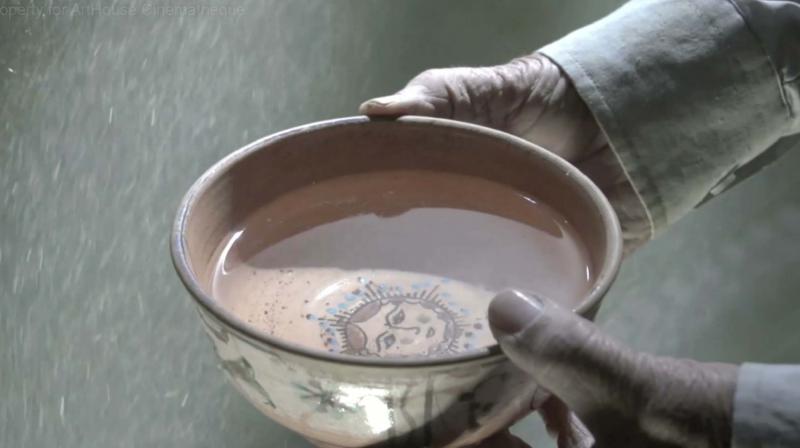To cut a long story Short'

Brahman Naman, Angry Indian Goddesses, Daughters of Destiny and Lipstick Under My Burkha - do they ring a bell? Probably. Online streaming platforms have brought indie cinema bursting onto the mainstream circuit, where they're being welcomed with open arms. 2017 was a stellar year, with films like Chaitanya Tamhane (Court) and Vikramaditya Motwane's Trapped. The latter, produced by Phantom Films, was shot in under a month, on a shoestring budget. Directors like Raam Reddy, Motwane and Q (Quashik Mukherjee), we're leaving out stalwarts like P. Manu for the moment, are household names - or nearly there. It's the dawn of a new day for indie cinema even in India, a country known for its rich, prolific contributions to world cinema.
Still, the number of titles that make it to the world's largest festivals remains surprisingly low. While it would be unfair doesn't wish to posit Cannes, Sundance, Venice or Berlin festivals as the zenith of cinematic achievement, the Indian presence isn't quite as strong as it should be. This has far less to do with quality or perseverance than the nitty-gritties that make up any project: equipment, funding, exposure and publicity. On June 15, Atta Galata in Koramangala will host the Asia Independent Film Festival, a first of its kind event in South India. Films from South Korea, China, Japan, India, Pakistan and a smattering from European countries like Poland have made it to the broad but highly-curated list, with filmmakers being given a chance to interact with their audiences and the "Pitch Your Short" platform. The platform, which will award a grant to the most promising filmmaker, provides that rarest of rare opportunity: funding for a short film. "In India, short films are still dismissed as not being serious enough," says Shapath Mahendra, whose earnest determination bursts forth from behind his horn-rimmed glasses and mop of curly hair.
His story began in 2015 with Doab Uncut Motion, an organisation that worked soley with curating films for international festivals. Determined not to move to Mumbai and enslave himself to the larger indie production houses, Shapath decided to work on his own terms. The budding filmmaker found, however, as he made his first forays in the circuit through DOAB, that there was plenty he didn't know. "This included even technical nuances like lighting," he admits. As he and his team trawled through hundreds of films from across the world, the expansive parameters of indie cinema began to fall into place. "Every festival has a definite mandate and they're not always similar," he says. "Having said that, merely being present at these events will bring filmmakers a great deal of exposure."
And still, access is hard to come by. The Film Fair in Goa is India's largest festival, although dozens happen across the country, through the year. Shapath has been present over the last few years and found, to his disappointment, that most indie filmmakers give the thing a miss. "It's expensive but not outrageously so. What stops filmmakers, however, is the fact that every bit they save goes back into making the film itself." By filmmaker, he refers to the average techie who spends his weekends with a camera, putting aside everything he can to fund his passion.
On the other hand, filmmakers from across the world continue to miss out on the very large, discerning audiences here. "I meet filmmakers from everywhere and they simply don't know how to bring their work here," Shapath explains. Audiences with a taste for art house cinema will have their fill here, with films like Just a Cup of Tea (Pakistan) and Court, all being screened over the three days. "We don't see much independent cinema from Pakistan, but this film shows us just how similar we are. Yes, India has developed and grown urbanised in a way that Pakistan hasn't, but the old ties remain."
Vince Costa's The Garnary of Salcete explores a community of Christian farmers in Kerala. "They converted to Christianity and took on those customs but that evolution hasn't been so straightfoward." Many of their older traditions remain, including the paganistic ritual of appeasing the rain Gods each year. The International Fiction Short includes A Bottle of Love (South Korea) and Monster City (Lo-Tien Li, Taiwan); Lend Me Your eyes, Baltazars (Hungary, Dora Elek) and Something's Changing (Lucy Rose) are among the non-fiction shorts. Feature films are part of the lineup too, even Shapath agrees that no Indian film festival is complete without them. These include Jamsil (Wanmin Lee, South Korea) and A RAY of Light by Anirban Mitra and Tirtha Dasgupta. "Anirban Mitra worked as a photogrpaher for Satyajit Ray himself and the film deals with those experiences," Shapath explains.
What: Attakkalari India Biennial 2017
When: Feb 3 to 12
Where: Multiple venues across the city
For the full schedule, visit http://www.attakkalaribiennial.org/calendar.html

